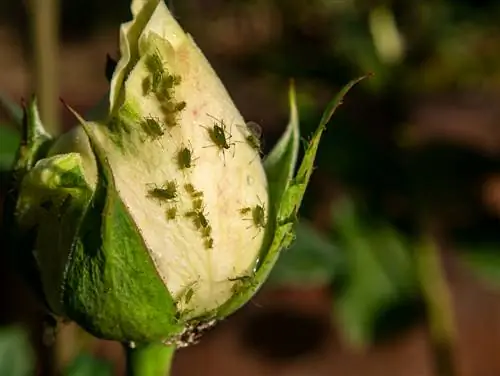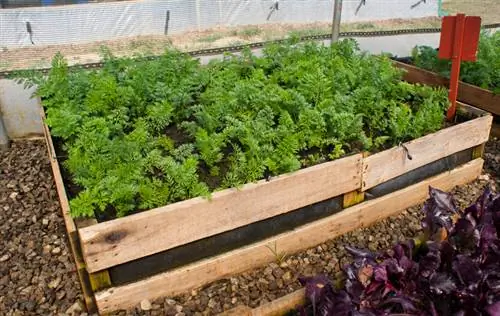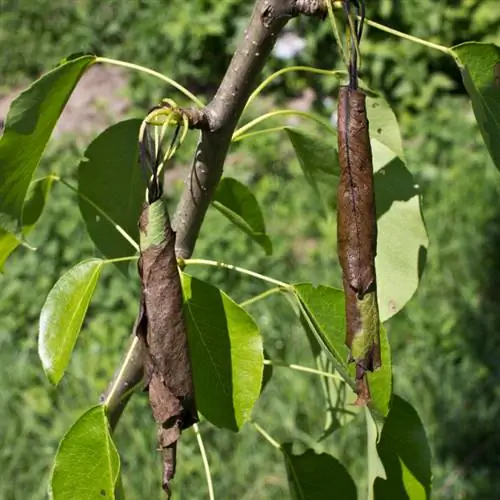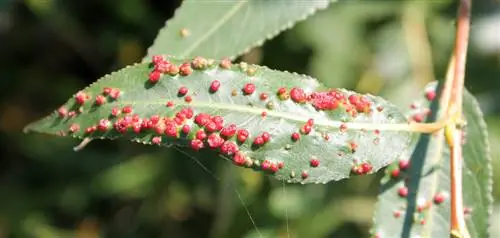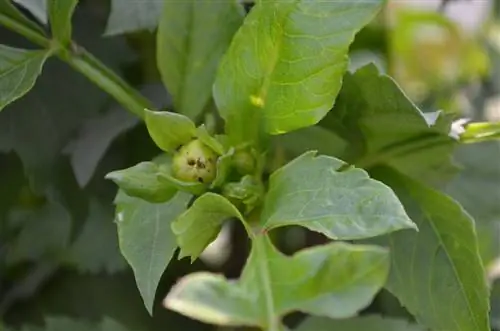- Author admin [email protected].
- Public 2023-12-16 16:46.
- Last modified 2025-01-23 11:22.
When ornamental plants show mottled leaves and stunted shoots, pest insects are often at work. Many of them can be recognized upon closer inspection. Combat with home remedies should be done as quickly as possible to achieve an effect.
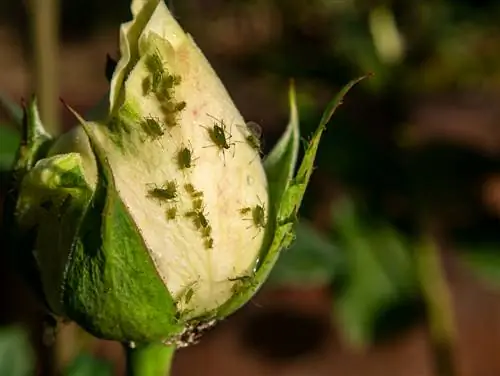
What pests can attack flowers and how do you fight them?
Typical flower pests are lice (aphids, mealybugs, mealybugs, scale insects), mites and whiteflies. The infestation can be combated by showering with water, spraying with soft soap or rapeseed oil solution and increasing the air humidity, if necessary.through the bag method.
Lice
They are plant pests that feed on the juices of the tissue. They have piercing mouthparts with which they pierce the sap tracts. Brown discoloration occurs at these puncture sites. The insects often leave sticky secretions on the leaves. They form a breeding ground for sooty mold fungi, which do not endanger the plants. The moldy lawn is difficult to wash off and looks unsightly.
Identify typical pests:
- Aphids: form colonies on shoots, on the underside of leaves and in leaf axils
- Mealybugs and mealybugs: produce a waxy substance reminiscent of cotton balls
- Scale insects: are protected by a solid waxy dorsal shield
This helps against lice infestation
Especially with mealybugs and scale insects, which are well protected by their secretions, rapid control in the early stages is necessary. Once they develop their protective armor, budgetary resources prove less successful. Spray the insects off the flowers with a hard jet of water.
Insensitive plants can be sprayed with a solution of one liter of water and 50 grams of soft soap (€4.00 on Amazon) to kill the pests. Spirit increases effectiveness. An aqueous spray containing rapeseed oil leaves an oil film on the leaves, under which the harmful insects can no longer breathe.
Mites
A spider mite infestation becomes noticeable when the plants are already damaged. The eight-legged insects, less than a millimeter in size, suck plant juices. They require dry and warm temperatures, so they occur on houseplants mainly in the winter months. Infected plants show mottled leaves with yellowish or silver-colored dots. If the infestation is very advanced, the foliage turns light green to white and eventually dries up.
How to deal with a mite infestation
To combat spider mites on houseplants, you can spray the affected specimens with a rapeseed oil solution. Repeat the treatment after seven to ten days, as many flowers are sensitive to oils. Maintain high humidity to prevent re-infestation.
Tip
The bag method helps with sensitive plants. Spray the plant with water and place a white trash bag over it. Ventilate after two to three days and repeat the process until all spider mites have disappeared.
Whiteflies
These whitefly insects find ideal living conditions at temperatures above 20 degrees and high humidity. Their larvae feed on plant juices like black aphids. Parasitic wasps parasitize the fly larvae, which die after two weeks. Macrolophus pygmaeus is a species of predatory bug that not only hunts whiteflies, but also destroys spider mites and aphids.

